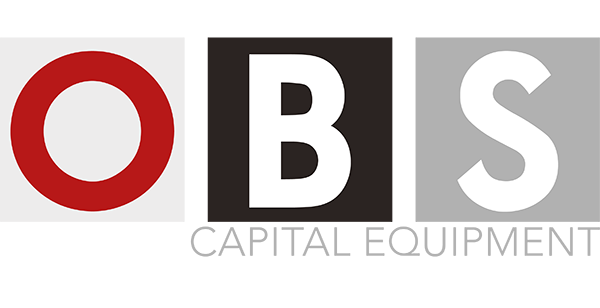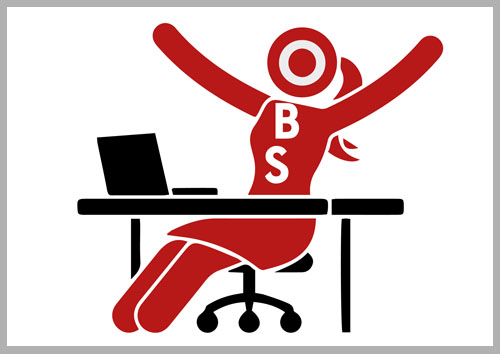“Closing the sale” techniques are taught in many sales seminars, online, in tapes, books and coaching sessions. Traditional techniques commonly taught include:
- The Trial Close: Encouraging the client to do some less significant, non-buying tasks or statements escalating in importance
- The Old Standard Choice Close: “Would you prefer the new truck or the used truck?”
- The Processing the Paperwork Close: “Can we get the paperwork started?”
- The Assumptive Close: Moving forward with project details, delivery & paperwork on the assumption that the client is buying from you
- The The Price is Going Up, Better Buy Now Close or The To Meet Your Delivery, We Better Order Now Close: Caution; customers often don’t believe this!
- The Puppy Dog Close: “Let’s just bring one out and if you like it, we’ll leave it and send you the invoice.”
- Simply asking for the order: “May I put this on order for you?”
These techniques should be used by a material handling salesperson in the Objective Based Selling sales process whenever a Classic Closing Situation occurs whereby:
- The primary decision maker is present in person or on the phone
- Objectives & parameters have been established and prioritised
- Price or method changes by the client are not significant
- The client needs to make a decision soon
The material handling salesperson should draw on one of the classic closing techniques to obtain the order. There are, however, two distinguishing characteristics of the material handling sales environment that limit the effectiveness of these techniques:
- Due to the significance of many material handling sales and the number of decision influencers involved, purchasing decisions are most often made when salespeople are not actually in the room. Also, with multiple decision influencers involved with purchasing in larger organisations, more than one sign-off or approval is often required and sometimes in a specific sequence.
- Another challenge is the issue of modifying proposals. The salesperson may be in a proposal review meeting with all the right people and they may like the proposal and indeed respond to a closing technique. Nevertheless, when proposals need to be modified as a result of new facts or input from that meeting, the agreement to purchase may be subject to change too.
IT’S A COMMITMENT TO AN ONGOING RELATIONSHIP
To be effective in closing sales in the material handling sales environment, the salesperson must first understand that in any significant purchase or project, the decision to go with a particular proposal is more than a simple purchase; it’s a commitment. It involves committing the buyer’s organisation to the seller’s organisation. To their way of doing business, follow-through and capabilities.
For significant material handling projects, the act of earning the order is often not a simple sales trick at the moment of decision. Rather, the client commitment is the logical extension of a process outlined in the Objective Based Selling model and OBS diagram. During this process, key decision influencers have come to trust the salesperson’s understanding of their situation and associated recommendations. The personal relationships developed provide the assurance for the client that the decision to proceed with this particular proposal is the correct decision.
Using the Objective Based Selling model, the salesperson does not need to be in the room when the purchasing decision is made because the salesperson has:
- taken the time to understand the client’s business and personal objectives and to prepare a proposal in which these are clearly outlined
- provided responsive recommendations with alternatives
- provided appropriate support for the proposal
- built personal professional relationships
TRIAL CLOSES & BUYING SIGNALS IN OBJECTIVE BASED SELLING
As mentioned above, the Objective Based Selling process offers many opportunities for two types of trial closes to be used when:
- There is client agreement on something other than the actual decision to buy. Agreement trial closes can occur during identification of objectives & parameters, when prioritising objectives and when considering alternatives. Even calling a salesperson back and agreeing to meet is a trial close.
- The client does something proactive at the request of the salesperson. This indicates growing confidence in the salesperson and the proposal. An even more positive trial close occurs when the client takes proactive steps to work with a salesperson. This includes: supplying extensive technical information; introductions to other decision influencers; supplying a reference; helping to instigate or attend a review meeting; facilitating presentation of a propsal or a product demonstration; going on a site visit; visiting a supplier’s facility or asking for a modified proposal.
Alternatively, reluctance or refusal to do these things, or suddenly not returning calls are definitely negative buying signals! When buying signals cease in response to trial closes, use open-ended questions such as:
- “What’s your hesitation?”
- “What’s changed?”
- “Where am I coming up short of your expectations?”
- “What should I be doing to work more effectively with you?”
- “What should I be doing to help you implement this project?”
OBJECTIVE BASED SELLING PROPOSALS HELP GAIN COMMITMENT WHEN THE SALESPERSON CAN’T BE THERE
When traditional closing situations don’t exist, the single most effective closing tool to gain client commitment is the Objective Based Selling proposal. These speak to the decision influencers the salesperson can’t meet.
The Objective Based Selling proposal starts with client objectives and parameters and builds a bridge to the salesperson’s recommendations, or alternative recommendations. It also provides proposal support, including references.
The proposal, along with the proposal review scrum or review meetings, gains commitment and closes sales even when the salesperson isn’t there. Again, using the Objective Based Selling model and process, if there is a delay in ordering, proposal support extends contact with the client, possibly creating a classic closing opportunity or a proposal modification opportunity which leads to the close.
A SPECIAL CLOSING TECHNIQUE: THE “REVERSE TIMELINE”
In many material handling projects, use of a reverse timeline can be an effective closing technique. It can even work if the salesperson is not present when the key decision influencers are making their decisions such as at a meeting.
In most material handling projects, particularly those of significance, at some point in the project a time frame (perhaps an operational deadline) becomes critical and becomes a driving force for making project and purchasing decisions.
Clients routinely attempt to pressurise salespeople with these time frames, saying “I’ll give you the order if you can meet this deadline.” This is often an unrealistic deadline, created by client procrastination in making a decision.
Salespeople can anticipate this and if they act early enough to put a convincing, honest reverse timeline in writing, actually use it as a catalyst for the client to act. The beauty of this technique is that it starts with the client’s own deadline, their own time objective. It then builds in the necessary steps to achieve effective order implementation, pinpointing a time at which the client must place an order to meet their own deadline.
For an example Reverse Timeline CLICK HERE
The level of detail here gives credibility to the information and it also reminds the client of all the steps required to meet the objectives. It’s a sequence chart that gives the client confidence that the salesperson has done this before and knows the process. If it is presented alongside the proposal on a specified date, it immediately and helpfully puts pressure on the client to come up with a decision. Why not go with the salesperson who clearly knows what they are doing?
Compare this approach to the normal material handling salesperson’s approach to providing delivery information such as: “delivery is 90 to 120 days ARO” which is not only very vague (so is that 90 days, 120 days or somewhere in between?), incomplete (delivered or operational?) but also assumes that the client knows that ARO is short for After Receipt of Order.
SUMMARY
- Traditional closing techniques should be tried where the right conditions exist, with relatively simple decisions, where time is becoming urgent.
- Due to the significance of the sales process, the ordering process in material handling is really the act of making a commitment to the salesperson and the company. In this case, traditional closing techniques often don’t work effectively because the salesperson is not in direct contact with the client when relevant decisions are made.
- Trial closes should be used throughout the Objective Based Selling process, obtaining client agreements and proactive actions.
- Committing to the salesperson becomes the logical culmination of the confidence built in the Objective Based Selling process. The OBS sales proposal is a major key to obtaining this commitment.
- Reverse timelines can be effective closing tools in many material handling sales situations where client time objectives are critical or urgent.
- If buying signals cease, use open-ended questions to help get back on track or to determine how much more time you need to commit to the project.
DOWNLOAD THE FULL ARTICLE AND MORE HERE.

